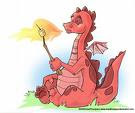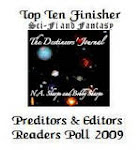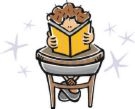As part of a virtual book tour, I am happy to be interviewing Linda Ballou, author of Wai-nani: High Chiefess of Hawaii-Her Epic Journey. Linda's reverence for the land and its people inhabits her words. She is a new voice from old Hawaii.
NAS: What inspired you write this story?
LB: While I was living on the north shore of Kauai a special issue in the local paper about Captain James Cook caught my attention. The fact that Captain Cook was killed in the Islands intrigued me. I wanted to know why. I was curious about what was happening in the Islands when Cook arrived. I wanted to know the Hawaiians side of the story. Most accounts depict the Hawaiians as blood- thirsty savages who ganged up on the world's greatest explorer. I learned this was not an accurate picture and felt that the Hawaiians had gotten a bum rap.
Cook made a lot of mistakes that eventually led to his demise. I wanted to show the dynamics of the Hawaiian society and tell the story from the Hawaiian point of view. This brought me to Kamehameha the Great and his favorite wife Ka'ahumanu.
Kamehameha was one of the warriors that greeted Cook. I found his story fascinating. The day he was born a comet lit the heavens marking the birth of a great chief. It was prophesied that this chief would unite the Hawaiian Islands. This story reminded me of the story of the star burning bright over the manger leading the wise men to baby Jesus. It was also said that the warrior who lifted the Naha Stone, a huge volcanic boulder, would be a great chief. Kamehameha, an athletic warrior lifted the stone when he was a teen. This seemed akin to King Arthur pulling the sword lodged in stone.
Joseph Campbell was alive at the time. I read his books and became fascinated by universal myths and legends. I felt this story was every bit as powerful as any in western annals and warranted re-telling.
NAS: Not unlike the Arthurian legend, Wai-nani's tale seems almost larger than life. The scenes with the dolphin take us out of historical fiction and into the realm of fantasy. Why did you need to cross genres?
LB: All of the scenes with the dolphins are taken from documented dolphin behavior. As recently at August 2007 there was a news story about a surfer who was hit by a Great White at Marine State Park off Monterey, Calif. A pod a dolphins formed a protective ring around him and saved him from being eaten. No one knows why dolphins protect humans, but stories of dolphin rescues go back to ancient Greece, according to the Whale and Dolphin Conservation Society.
Wai-nani's friendship with Eku is not as far-fetched as you might think. Ka'ahumanu reputedly swam 18 miles a day. When I was on Kauai, I spoke with a woman named Bobo who routinely swam the treacherous waters of the Napali Coast. She told me dolphin often accompanied her on her swims. That is where I got the idea of my heroine having a dolphin family to protect her.
NAS: One of the things I particularly enjoyed is that your story is vibrantly rich in detail. What were your sources?
LB: I began my research by reading the oldest books on the subject. I didn't realize that modern Hawaiian scholars have questioned much of what is in those accounts. The earliest chronicles written by people who were taught to read and write by the missionaries were clouded with the Christian world view.
For instance, there is no fiery hell in Hawaiian cosmology. When people died they went to Po -a peaceful, underwater place where people don't have to worry about much and they sit around playing checkers and other games. There is no punishment for promiscuity and it is not thought of as a bad thing. In fact, practices to enhance sex are handed down from elder to child at a very early age.
Contradictory oral accounts followed up by even more contradictions from modern scholars made it hard for me to sort things out in my own mind.
NAS: Michner's book is said to have pretty much covered Hawaii. What does your book offer that his didn't?
LB: His story begins where mine ends. He touches lightly on the pre-contact days and dwells on the impact of the missionaries who arrived in 1820.
NAS: What sets your book apart from other writers like Kiana Davenport who has written three novels set in Hawaii?
LB: Mine is written in first person. Wai-nani speaks directly to the reader. She is a voice from ancient Hawaii..i not a scholar looking back. No one else has attempted this. Kiana's books are written in third person. Her main character, Pono, is a modern Hawaiian with ancient ties. Her book, Shark Dialogues, spans all of Hawaiian history, ancient and modern, while mine focuses on the years of Kamehameha's rise to power in pre-contact times.
NAS: Why Ka'ahumanu? What makes her story so compelling?
LB: I identified with her spirit of adventure and rebellion. During the sixties and seventies women were breaking out. I am athletic outdoorsy, independent and childless by choice. She was childless not by choice, but she found other meaning in her life.
She questioned authority and the established ways of her time.
She insisted on having sexual freedom.
She stood shoulder to shoulder with her warrior husband, a source of strength for him.
She was strong brave, athletic, sensuous and deeply spiritual. In short, I saw her as the forerunner of the modern woman.
I learned after writing my first draft and sharing it with a Hawaiian scholar that even though she was loved by the common people, she was a controversial figure.
She was perceived by male power figures, namely priests, as a threat. Some people even believe she was part of a conspiracy to kill Kamehameha the Great and remember her as "the flaw that brought down the chiefdom."
NAS: What are your readers going to learn from this book?
LB: Bare minimum, they will come away with a better understanding of the Hawaiian point of view and a greater sensitivity to the nuances of the culture. They will be able to decide whether Ka..ahumanu should be revered s the Mother of the People, or whether she should be remembered as the "flaw that brought down the chiefdom." I have tried to capture the poetry and sensual beauty of the Islands as well as the deeply spiritual aspects of the Hawaiian people. Hopefully, the reader will feel that they have been on an epic journey in a time and place that they can't get to any other way.
NAS: What was the biggest challenge for you in writing this story?
LB: It was difficult to write the story without using modern words that would jar the reader back into the 21st century. Keeping Wai-nani's voice consistent over a 40-year time frame in which European contact brought huge changes to the Hawaiian point of view was difficult.
Another challenge was trying to represent the ancient Hawaiians who were filled with contradictions in an honest, even handed way. Even though they lived under a harsh and extreme caste system that included slaves and called for human sacrifice, as a whole they were nurturing to one another. They shared the fruits of their labors in a communal, caring way. The Ohana, or extended family, was the most important unit and no child went unloved. When troubles came there was a time for talking things out. "No job is too hard if it is done all together" is a basic Hawaiian precept. Even though the high chiefs siphoned off the riches of the commoners they were also the first conservationists. They placed kapus, or restrictions, on fishing during spawning seasons to ensure enough for all.
NAS: Many writers look back at their lives and can identify a specific time when they realized writing was in their blood and what they wanted to do more than anything else. Was there a pivotal event in your life that brought you to writing?
LB: Yes, when I was thirteen my parents took me to Alaska. I left sunny Southern Cal an honor student trying out to be a cheerleader. When I arrived in Haines, population 2,000, with twelve kids in my class and only 60 kids in the entire high school, it was a shock to my psyche. Even though I had fun being the new girl in town and was into the extreme beauty of the place, I was lonely. I turned to books for companionship. People who read often become writers.
NAS: What person has influenced you the most in life?
LB: Besides my favorite aunt who was a very independent, self-educated, unconventional woman and an unintentional forerunner in the modern woman's movement, I'd say Jack London. I wrote a piece called "Jack London and Me" that talks about how our paths have crossed on more than one occasion. He inspired me as a human being who lived life to the hilt and as the master of adventure writing. He was well-loved by the Hawaiians. His collection of short stories about his time in the islands and some of the legends of old is one of my favorites. He penned "The Water Baby" included in this collection at his Beauty Ranch in Sonoma just before he died.
NAS: What do you say to those who feel that because you are not Hawaiian you are not qualified to write about their history?
LB: When Annie Proulx wrote The Shipping News she was highly criticized by New Found Landers who felt that because she was a stranger to them she was not qualified to write their story. It is her habit to live in a place a couple of years before she begins to write a story. She is a professional writer trained to make objective observations, to notice telling details and does extensive research before putting pen to paper. She says that often the people in a given region can't see outside of the emotions attached to their lives. They can't remove themselves from their own snapshot. That is where a writer serves a very real purpose in society.
It's true I'm a haole and that my physical time in Hawaii has been limited, but I have researched extensively over the last 20 years. What's more, I have great aloha for the Hawaiians and respect their culture. My work is not perfect, but it is an honest attempt to capture the poetry, pageantry and sensual beauty of the time.
NAS: What did you learn from writing this story?
LB: A greater empathy for the Hawaiian people and their sorrow in the loss of their gods, land, and laws to outsiders. Their culture has been enriched in some ways and diluted in others from the influx of people to the" prettiest fleet of islands ever to anchor in the Pacific" Even though their numbers have been decimated by intermarriage, disease and wars and there are only a few full-blood Hawaiians alive today, the mystique and romance of their heritage lives on.
Secondly, it made me aware of another path to spiritual enrichment and personal strength. I actively throw stones of jealousy, greed, anger and regret from my bowl so that mana or spiritual power may flow freely in my life.
NAS: What has given you the most pleasure in the last year?
LB: Getting Wai-nani out of my drawer and into the streets. She deserves it, and I need to move on to my travel collection Lost Angel Walkabout.
NAS: How can someone buy your book?
LB: Go to www.LindaBallouAuthor.com and click on books.
This is a book I can highly recommend and think you will enjoy. Just a thought...
We just want to help you
3 months ago


























0 comments:
Post a Comment